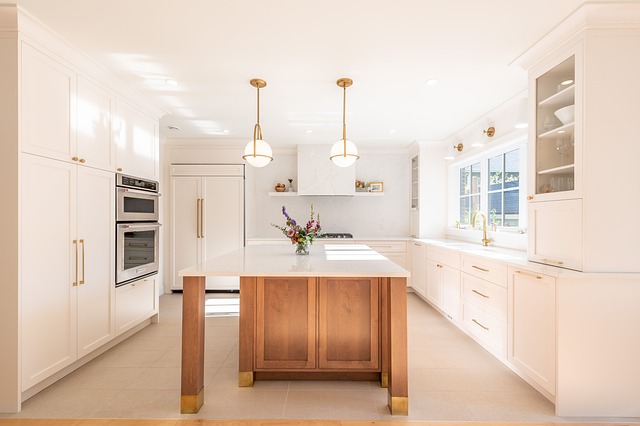Building an attached Accessory Dwelling Unit (ADU) can be a fantastic way to maximize property use, increase home value, or create a living space for family members. However, navigating the legal landscape surrounding ADU construction can be complex. Here’s an in-depth look at seven essential legal tips for building your perfect attached ADU.
1. Understand Local Zoning and Land Use Regulations
Local zoning and land use regulations govern how properties can be developed and used within a specific area. These regulations ensure that new constructions, including ADUs, align with the community’s planning goals, infrastructure capacities, and aesthetic standards.
Key Considerations:
- Zoning Codes: Check your local zoning codes to determine if your property is in a zone that allows ADUs. Some areas have specific zones where ADUs are permitted, while others may have restrictions.
- Setbacks: Zoning codes typically dictate how far structures must be from property lines. Ensure your ADU complies with these setback requirements.
- Height Limits: There may be restrictions on the height of buildings in certain zones. Make sure your ADU plans adhere to these limitations.
- Lot Size: Some jurisdictions require a minimum lot size for ADUs. Verify that your property meets these requirements.
Steps to Take:
- Consult Local Regulations: Visit your city or county planning department’s website or office to review local zoning regulations and guidelines.
- Obtain Zoning Clearance: Before proceeding with plans, secure a zoning clearance or confirmation that your ADU is permitted under current zoning laws.
2. Get a Detailed Permit and Approval Process
The permit and approval process involves obtaining the necessary permissions from local authorities before you can commence construction. This process ensures that your ADU complies with building codes and safety standards.
Key Considerations:
- Building Permits: Most construction projects, including ADUs, require a building permit. This permit verifies that your plans comply with local building codes.
- Design Review: Some jurisdictions require a design review process to ensure the ADU aligns with the community’s aesthetic standards.
- Environmental Impact: Depending on your location, you might need to conduct an environmental impact assessment if your ADU could affect local ecosystems.
Steps to Take:
- Submit Plans for Review: Prepare and submit detailed construction plans to your local building department. These plans should include architectural drawings, structural details, and compliance with energy codes.
- Schedule Inspections: Plan for various inspections during construction, including foundation, framing, electrical, and final inspections.
3. Comply with Building Codes and Safety Standards
Building codes and safety standards ensure that your ADU is constructed to be safe and durable. These codes cover structural integrity, electrical systems, plumbing, and more.
Key Considerations:
- Structural Codes: Ensure that your ADU’s structural components meet safety standards, including load-bearing walls, foundations, and roofing.
- Electrical Codes: Your electrical system must comply with the National Electrical Code (NEC) or local variations to ensure safety and functionality.
- Plumbing Codes: Plumbing systems should adhere to codes that prevent leaks, ensure proper drainage, and protect against contamination.
Steps to Take:
- Hire Licensed Professionals: Work with licensed architects, engineers, and contractors who are familiar with local building codes and can ensure compliance.
- Review Code Updates: Building codes can be updated periodically. Stay informed about any changes that could affect your ADU project.
4. Address Property Tax Implications
Building an ADU can impact your property taxes. Increased property value from adding an ADU may result in higher taxes, so it’s important to understand these implications.
Key Considerations:
- Assessed Value: Adding an ADU may increase your property’s assessed value, leading to higher property taxes.
- Tax Exemptions: Some jurisdictions offer tax exemptions or incentives for ADU construction. Research if any such programs are available.
Steps to Take:
- Consult a Tax Advisor: Speak with a tax professional to understand how an ADU might impact your property taxes and explore potential tax benefits or exemptions.
- Update Property Records: Once construction is complete, ensure that your property records are updated to reflect the new ADU.
5. Review Homeowner Association (HOA) Rules
If your property is within a community governed by a Homeowner Association (HOA), you must comply with its rules and regulations, which may affect your ADU project.
Key Considerations:
- HOA Approval: Some HOAs require approval for exterior changes or new constructions, including ADUs.
- Design Restrictions: HOAs may have specific guidelines regarding the design, appearance, and size of new structures.
Steps to Take:
- Review HOA Covenants: Obtain and review the HOA’s covenants, conditions, and restrictions (CC&Rs) to understand their requirements and restrictions regarding ADUs.
- Submit a Proposal: If required, submit your ADU plans to the HOA for approval before proceeding with construction.
6. Consider Utility Connections and Infrastructure
ADUs require connections to utilities such as water, sewer, and electricity. Ensuring that your property can support these connections is crucial for a successful project.
Key Considerations:
- Water and Sewer: Check if your existing water and sewer systems can handle the additional demand from an ADU. You may need to upgrade these systems.
- Electrical Capacity: Ensure that your electrical system can accommodate the additional load from the ADU. Upgrades may be necessary.
Steps to Take:
- Conduct a Utility Assessment: Work with utility companies to assess your property’s capacity and identify any required upgrades.
- Coordinate with Utility Providers: Coordinate with utility providers to arrange for any necessary modifications or new connections.
7. Understand Rental and Usage Regulations
If you plan to rent out your ADU, or if it will be used for purposes other than a family dwelling, you need to be aware of regulations governing rental properties and usage.
Key Considerations:
- Rental Regulations: Local laws may regulate short-term and long-term rentals, including zoning requirements and rental permits.
- Occupancy Limits: There may be restrictions on the number of occupants allowed in an ADU based on local regulations.
Steps to Take:
- Research Rental Laws: Investigate local rental regulations to ensure compliance if you plan to rent out your ADU.
- Obtain Necessary Permits: Apply for any required rental permits or licenses before renting out the ADU.
Conclusion
Building an attached ADU can be a rewarding project that enhances your property’s functionality and value. However, navigating the legal requirements is crucial to ensure a smooth and compliant construction process. By understanding and adhering to local zoning regulations, obtaining the necessary permits, complying with building codes, addressing property tax implications, reviewing HOA rules, considering utility connections, and understanding rental regulations, you can build your perfect attached ADU while avoiding potential legal pitfalls.

Maximize Your Property with Attached ADUs by Red White & Blue Construction!
Are you considering an attached ADU in Lafayette, CA? Look no further than Red White & Blue Construction, your trusted ADU specialists! Transform your property with a custom attached ADU that caters to your changing lifestyle needs. Renowned for our expertise in ADU projects, we’re here to turn your ideas into reality, be it a cozy extension to your home, a stylish in-law suite, or a functional home office. Our proven track record in the Bay Area stands as a testament to our commitment, craftsmanship, and the exceptional standards we uphold in every undertaking.
At Red White & Blue Construction, we’re more than just builders; we’re architects of your ideal living solution. With our transparent pricing and exceptional client service, you’re not just adding an ADU; you’re investing in a versatile, value-adding extension of your home. Choose Red White & Blue Construction for your ADU project. Embark on a journey of Property Enhancement Excellence and contact us today!
Disclaimer
The materials available on this website are for informational and entertainment purposes only and not to provide advice. You should obtain advice concerning any particular issue or problem from a professional. You should not act or refrain from acting based on any content included in this site without seeking legal or other professional advice. The information presented on this website may reflect only some of the current building developments. No action should be taken in reliance on the information on this website. We disclaim all liability concerning actions taken or not taken based on any or all of the contents of this site to the fullest extent permitted by law.





